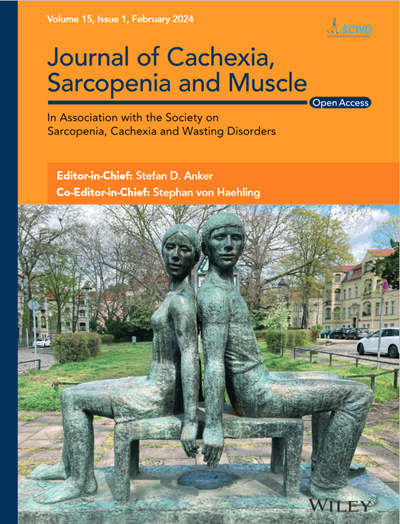Associations between multimorbidity and frailty transitions among older Americans
Abstract
Background
The associations of multimorbidity patterns with transitions between frailty states remain unclear in older individuals.
Methods
We used data from the National Health and Aging Trends Study 2011–2019. Frailty was measured annually using the Fried frailty phenotype. Multimorbidity patterns at baseline were identified using latent class analysis based on 14 chronic conditions. We used the semi-Markov multi-state model to investigate the influences of multimorbidity characterized by condition counts and patterns on subsequent frailty transitions over follow-ups.
Results
Among 9450 participants aged ≥65 years at baseline, 34.8% were non-frail, 48.1% were pre-frail and 17.0% were frail. Over a median follow-up of 4.0 years, 16 880 frailty transitions were observed, with 10 527 worsening and 6353 improving. For 7675 participants with multimorbidity, four multimorbidity patterns were identified: osteoarticular pattern (62.4%), neuropsychiatric–sensory pattern (17.2%), cardiometabolic pattern (10.3%) and complex multimorbidity pattern (10.1%). Compared with no disease, multimorbidity was significantly associated with an increased risk of worsening transitions, including from non-frail to pre-frail (hazard ratio [HR] = 1.35; 95% confidence interval [CI] = 1.21–1.52), from non-frail to frail (HR = 1.68; 95% CI = 1.04–2.73), from pre-frail to frail (HR = 2.19; 95% CI = 1.66–2.90) and from pre-frail to death (HR = 1.64; 95% CI = 1.11–2.41). Compared with the osteoarticular pattern, neuropsychiatric–sensory, cardiometabolic and complex multimorbidity patterns had a significantly higher risk of worsening frailty (all P < 0.05).
Conclusions
Multimorbidity was associated with dynamic transitions between frailty states and death among older American adults, and the associations varied across multimorbidity patterns. The findings could offer significant implications for public health policymakers in planning interventions and healthcare resources. They also might inform clinicians regarding providing targeted clinical treatment and health management based on multimorbidity patterns of older people.

 求助内容:
求助内容: 应助结果提醒方式:
应助结果提醒方式:


